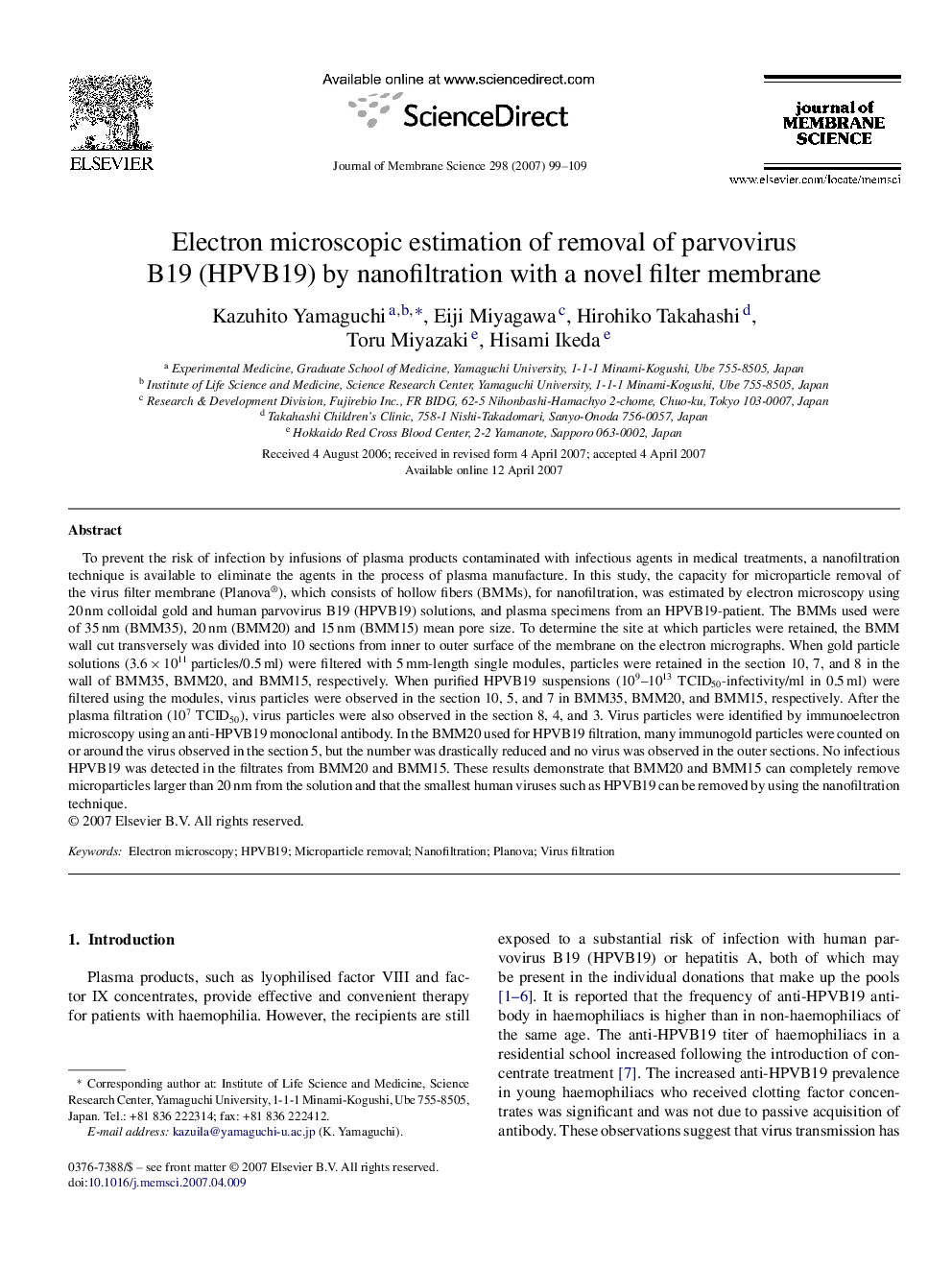| Article ID | Journal | Published Year | Pages | File Type |
|---|---|---|---|---|
| 638626 | Journal of Membrane Science | 2007 | 11 Pages |
Abstract
To prevent the risk of infection by infusions of plasma products contaminated with infectious agents in medical treatments, a nanofiltration technique is available to eliminate the agents in the process of plasma manufacture. In this study, the capacity for microparticle removal of the virus filter membrane (Planova®), which consists of hollow fibers (BMMs), for nanofiltration, was estimated by electron microscopy using 20Â nm colloidal gold and human parvovirus B19 (HPVB19) solutions, and plasma specimens from an HPVB19-patient. The BMMs used were of 35Â nm (BMM35), 20Â nm (BMM20) and 15Â nm (BMM15) mean pore size. To determine the site at which particles were retained, the BMM wall cut transversely was divided into 10 sections from inner to outer surface of the membrane on the electron micrographs. When gold particle solutions (3.6Â ÃÂ 1011Â particles/0.5Â ml) were filtered with 5Â mm-length single modules, particles were retained in the section 10, 7, and 8 in the wall of BMM35, BMM20, and BMM15, respectively. When purified HPVB19 suspensions (109-1013 TCID50-infectivity/ml in 0.5Â ml) were filtered using the modules, virus particles were observed in the section 10, 5, and 7 in BMM35, BMM20, and BMM15, respectively. After the plasma filtration (107 TCID50), virus particles were also observed in the section 8, 4, and 3. Virus particles were identified by immunoelectron microscopy using an anti-HPVB19 monoclonal antibody. In the BMM20 used for HPVB19 filtration, many immunogold particles were counted on or around the virus observed in the section 5, but the number was drastically reduced and no virus was observed in the outer sections. No infectious HPVB19 was detected in the filtrates from BMM20 and BMM15. These results demonstrate that BMM20 and BMM15 can completely remove microparticles larger than 20Â nm from the solution and that the smallest human viruses such as HPVB19 can be removed by using the nanofiltration technique.
Related Topics
Physical Sciences and Engineering
Chemical Engineering
Filtration and Separation
Authors
Kazuhito Yamaguchi, Eiji Miyagawa, Hirohiko Takahashi, Toru Miyazaki, Hisami Ikeda,
